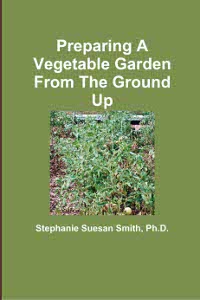
cherokee purple tomato, an heirloom plant
The terms “hybrid” and “open pollinated” plants are used as if every gardener knows what they mean. Further, people seem to engage in passionate debate about which type of plant is better and the shortcomings of the other type. I will not attempt to solve that debate. I will attempt to explain what the terms mean.
Open pollinated plants are plants that breed with others of their species with the help of anatomy, the wind, insect, birds, bats, and other pollinators. While “heirloom” and “open pollinated” are often used as if they mean the same thing, they do not. Open pollinated variaties are being developed every day.
Fields of plants. When one travels through some areas of the country, particularly California, the seed companies are growing vast fields of plants. The seeds will be harvested from these and sold to gardeners. However, once planted, no further action is taken towards mechanical pollination. The plants pollinate each other or themselves.
Sometimes hybrids happen. Occasionally in nature, a plant cross pollinates with a close relative and forms a hybrid. Usually, such a hybrid is sterile, much like a mule. Sometimes, however, the hybrid can propigate and a new variety is formed. If the new variety can compete better than the parents, it continues. If not, it is bred out of the line.
How most hybrids happen. In a more radical form, a hybrid plant is developed when a human deliberately breeds two closely related varieties to obtain a plant more to his liking. Many vegetable plants are grown this way, although some new open pollinated varieties are still being developed. Hybrids are usually grown each year, yeilding F1 hybrids. No attempt is made to breed F1 hybrids together and develop the line further.
Why hybrids happen. The proponents of hybrids say that crossing two healthy plants that compliment one another yields a plant that is healthier and better than either. Hybrids are responsible for being able to produce more food on less land all over the world. New varieties can be developed to address a specific need.
Expensive plants. They are, however, expensive to produce since the parents must be crossed by hand, in a sealed greenhouse that excludes insects or other pollinators. Sometimes, hybrids fail to improve over the open pollinated varieties and are abandoned. Further, a company can patent a hybrid variety, which means they sell it at a premium.
Hybrids don’t reseed. Even if the hybrid produces seed, it will not “reproduce true” or grow a plant exactly like it. The plant will vary in unpredictable ways toward one or the other parent. New seed must be purchased each year. The pollen from the hybrids can spread to nearby open pollinated plants, contaminating them as well.
Only you can decide whether to plant hybrid plants, open pollinated plants, or a mixture of both. Please, however, stay civil in the comments.
 For more help gardening, buy my book, Preparing A Vegetable Garden From The Ground Up
For more help gardening, buy my book, Preparing A Vegetable Garden From The Ground Up
Available in print or ebook from Amazon.com or other retailers, this book walks you from choosing the site of your garden all the way through what to do after the harvest. Buy a copy for yourself or a friend today!


Do hybrid plants have better odds of surviving the hot summer months?
It depends on the climate they are intended to be grown in.
The seeds produced from open pollination can be saved for the next season’s garden and will produce plants similar in genetic makeup
Most of the vegetables what you buy in the supermarkets are produced from hybrids. They select the desired qualities over generation to make the veggies last longer, called long shelf lifes, and for even looking fruits. Thats why they so tasteless most of the time. Especially the tomatoes. You cannot beat a good old heirloom tomato picked in your garden! My favourites are the black ones. Do you grow any Steph?
I got some seed for those, but could not successfully harden off the seedlings and they died after transplant. I would love to get them to grow, though
When choosing new vegetable varities, how can I tell if the seeds kept from these plants are viable? If I find one that I like, it’s fun to keep seeds and enjoy them in the future. Many “heirloom” seeds are outdated and are not immune to many plant problems which the newer varieties are resistant to. There is so much Hype out there it’s hard to get the facts. I don’t want “shipping perfect” plants but I do want plants that are resistant to the most common diseases and produce viable seeds.
HELP!!!
Heirloom seeds can be outdated, especially if you get them from an individual. However, the Seed Savers Exchange grows out plants each year from their stock of heirloom plants and then sells the excess. Buying from a reputable dealer such as them helps. If you have enough seeds, you can wet a paper towel, put ten seeds on it, cover the paper towel with another wet one, then wrap the whole ball in plastic wrap. Place it in a warm, dark place and wait a week. Look to see how many germinated. That tells you the germination rate.
Some plants take longer than a week to germinate, so leave them alone longer. Finally, as far as diseases, it is true many strains are not resistant to common diseases. Catalogs usually tell you which ones are resistant to a particular disease. Otherwise, you have to try and see if it will grow. Territorial Seed Company is grafting heritage tomato plants onto a sturdy root stock that is resistant to most tomato diseases. You might start there.
I did not really understand the difference till reading this post. Thanks for sharing Stephanie.